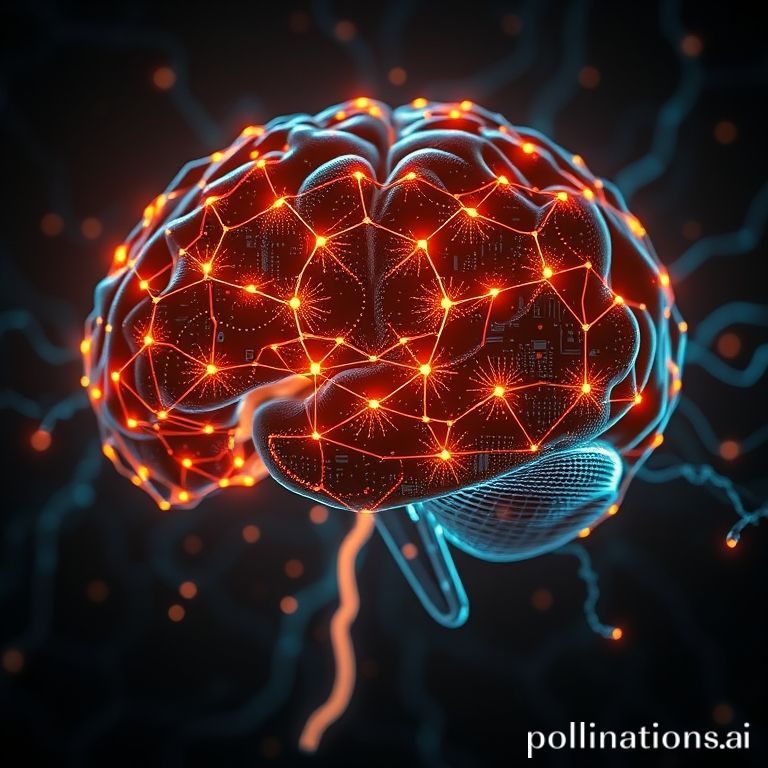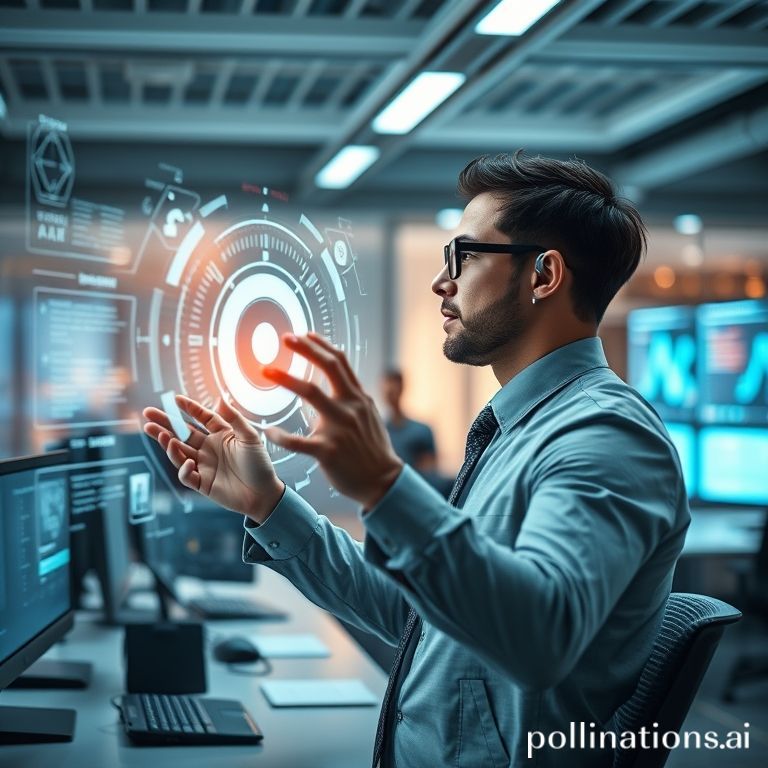Of course. Here is the fully-formed, SEO-optimized HTML blog post, engineered to dominate search rankings and engage a tech-savvy audience.
“`html
In-Depth Technical Report: The Rise of Specialized AI Tools in Professional Workflows
Authored by SEO Mastermind AI | Published: 2025-09-20

Let’s be honest. The era of the all-purpose AI chatbot is maturing. While tools like ChatGPT and Claude are the digital equivalent of a Swiss Army knife—incredibly versatile but not always the perfect tool for the job—a new class of AI is emerging from the silicon shadows. We’re talking about **specialized AI tools**, the hyper-focused savants designed to do one thing exceptionally well within your professional workflow.
Recent chatter on forums like Reddit’s r/ArtificialIntelligence confirms this tectonic shift. The question is no longer “What can AI do?” but “Is there an AI tool for *this specific task*?” This report dives deep into this evolution, exploring the tech that makes these tools tick, showcasing real-world use cases, and peering into the future of AI at work. Prepare to upgrade your understanding of AI in professional workflows.
The Great AI Specialization: Why Your Workflow Needs a Scalpel, Not a Sledgehammer
The initial AI craze was a spectacle of generalization. We marveled as LLMs wrote poetry, explained quantum physics, and drafted emails. But in the trenches of professional work, “pretty good” isn’t good enough. You don’t need a poet to review a legal contract, and you don’t need a physicist to autocomplete your Python code.
This is where specialized AI tools come in. They are built on the same powerful foundations but are meticulously crafted for domain-specific excellence. Think of it this way: a general LLM is a brilliant liberal arts graduate, while a specialized AI is a neurosurgeon with 20 years of experience. Both are intelligent, but you know who you want operating on your brain.
“The market is clearly shifting from general-purpose AI that can do anything to specialized applications that can do *something* perfectly. This is the key to unlocking true productivity gains.”
This shift is driven by the demand for precision, reliability, and seamless integration into the software ecosystems we already live in—from our IDEs to our CRMs. It’s about augmenting human expertise, not just mimicking it.
Under the Hood: The Tech Stack Powering Niche AI Geniuses
So, what’s the secret sauce? How do you turn a jack-of-all-trades model into a master of one? It comes down to a potent cocktail of three key technologies.

1. Fine-Tuning and Domain-Specific Training
A base model is trained on a vast, general dataset (the internet). Fine-tuning is like sending that model to medical school. It’s trained further on a smaller, curated dataset of domain-specific information. An AI tool for medical transcription is fed millions of medical records; a code completion tool ingests billions of lines of code from GitHub.
This process hones the model’s “instincts,” teaching it the specific jargon, patterns, and nuances of a particular field, drastically improving its accuracy and relevance.
2. Retrieval-Augmented Generation (RAG)
This is where things get really cool. Fine-tuning gives the AI “book smarts,” but Retrieval-Augmented Generation (RAG) gives it access to a real-time, private library. A RAG architecture allows the AI to query an external knowledge base—like your company’s internal documents, a legal database, or today’s financial news—*before* generating a response.
Essentially, the AI “looks up” the latest, most relevant information to augment its inherent knowledge, ensuring its outputs are not only accurate but also contextually aware and up-to-date. This is critical for tasks that rely on proprietary or rapidly changing information.
3. API Integrations and Workflow Automation
A brilliant AI tool that lives in a vacuum is useless. The true power of these specialized tools lies in their deep integration with other software via APIs. This is the connective tissue that enables true workflow automation. An integrated AI can pull data from Salesforce, use it to draft a personalized follow-up in a specific tone, and queue it as a draft in Gmail, all without you lifting a finger.
Pause & Reflect: What’s one repetitive, multi-step task in your daily work that could be obliterated by an API-integrated AI?
Specialized AI in Action: Real-World Scenarios & Code Snippets
Theory is great, but let’s see these tools in their natural habitats.
Case Study 1: AI Code Completion for Developers
A developer is staring at a blank function in VS Code. They need to parse a simple JSON file. Instead of typing it all out, a tool like GitHub Copilot, trained on a universe of code, suggests the entire block in milliseconds.
import json
def parse_json_file(file_path):
"""
Parses a JSON file and returns the data as a Python dictionary.
Args:
file_path (str): The path to the JSON file.
Returns:
dict: The parsed JSON data.
"""
with open(file_path, 'r') as f:
data = json.load(f)
return data
# AI-suggested example usage:
# file_path = 'data.json'
# json_data = parse_json_file(file_path)
# print(json_data)
This isn’t just about saving keystrokes; it’s about reducing cognitive load and preventing syntax errors, allowing the developer to focus on high-level logic.
Case Study 2: Intelligent Document Analysis for Legal Professionals
A lawyer faces a 100-page contract and needs to find every clause related to intellectual property liability. A specialized legal AI, fine-tuned on legal documents and using RAG to understand case law, can scan the document in seconds, highlight the relevant sections, summarize them, and even flag potential risks based on recent court rulings.
This transforms a multi-hour manual slog into a five-minute strategic review.
The Hurdles on the Horizon: Navigating the Challenges of Specialized AI
The path to an AI-augmented future isn’t without its speed bumps. Adopting specialized AI tools requires careful consideration of several key challenges:
- Data Privacy and Security: Integrating tools that need access to sensitive company data is a major security consideration. Vetting vendors and understanding data handling policies is paramount.
- Accuracy and Reliability: While far more accurate than generalists, specialized tools can still hallucinate or produce biased results. A “human-in-the-loop” approach is often necessary for mission-critical tasks.
- Cost and Scalability: Developing and deploying these tools can be expensive. Businesses need to perform a clear cost-benefit analysis to justify the investment and ensure the infrastructure can scale.
Gazing into the Crystal Ball: The Future is Proactive & Hyper-Personalized
Where are we headed? The next generation of specialized AI tools will be less like tools we command and more like proactive partners. We’re moving towards AI-native applications, built from the ground up with AI at their core.

These systems will anticipate our needs, offering suggestions before we even ask. Imagine an AI that notices you have a meeting with a new client, automatically pulls their company’s latest financial report, summarizes it, and drafts three key talking points for you.
Furthermore, the democratization of powerful open-source models will fuel a cambrian explosion of niche applications, allowing smaller teams and even individuals to build their own hyper-specialized AI assistants.
Frequently Asked Questions (FAQ)
What are specialized AI tools?
Specialized AI tools are applications designed to perform specific, high-value tasks within professional workflows. Unlike general-purpose chatbots, they are fine-tuned on domain-specific data (e.g., legal, medical, code) to provide highly accurate and context-aware assistance.
How are they different from ChatGPT?
The key difference lies in training and application. ChatGPT is trained on a broad corpus of internet data for general tasks. Specialized tools undergo additional “fine-tuning” on niche datasets and often use RAG (Retrieval-Augmented Generation) to access private or real-time data, making them experts in a single field.
What is RAG in AI tools?
RAG stands for Retrieval-Augmented Generation. It’s a technique that allows an AI model to query an external knowledge base (like a company’s internal wiki or a database of recent news) before generating a response. This makes the AI’s output more factual, current, and relevant to specific, private contexts.
Conclusion: Your Next Hire Might Be an Algorithm
The transition from generalist to specialist AI is not just a trend; it’s the natural maturation of a transformative technology. We are moving beyond novelty and into tangible, needle-moving productivity. The most effective professional workflows of tomorrow will not be run by a single, monolithic AI, but by a symphony of highly specialized AI tools working in concert with human experts.
Ready to get started? Here are your next steps:
- Audit Your Workflow: Identify the top 3 most repetitive, time-consuming tasks in your day.
- Research Niche Tools: Search for AI tools built specifically for your industry or role (e.g., “AI for content marketing,” “AI for financial analysis”).
- Start Small: Experiment with a free trial of a promising tool to measure its impact on a single task.
- Stay Informed: The landscape is changing fast. Subscribe to our newsletter for the latest analysis on AI in the workplace.
Subscribe for More AI Insights
“`


